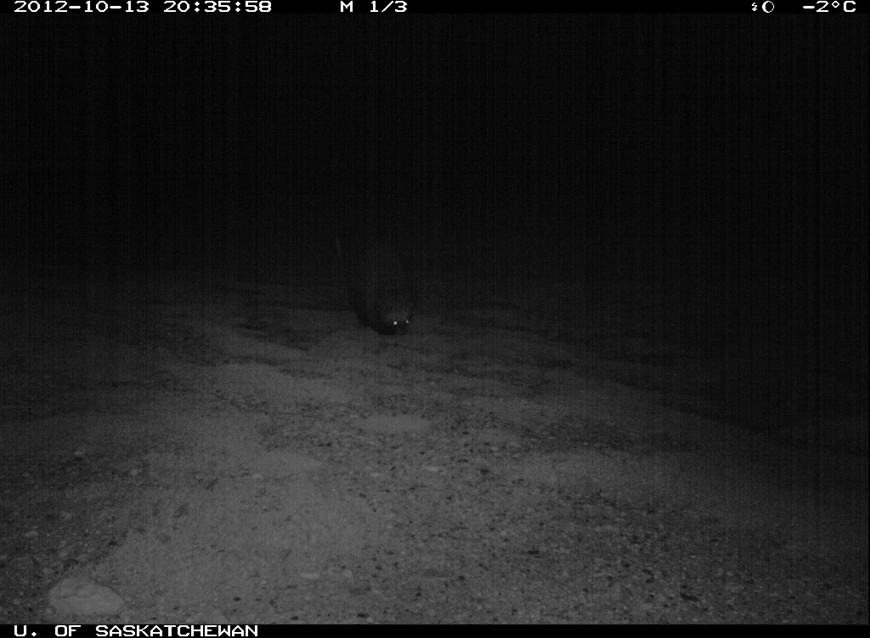Wolverine sighting!
Wapusk National Park

© University of Saskatchewan
As the largest terrestrial member of the weasel family, the wolverine (Gulo gulo), is an animal that commands respect. They have a bristly coat with unique coloration patterns on their face, neck and chest which allows individuals to be easily identified. Males are 30-40% larger than females, weighing 10-25 kg (20-55 lbs). Females typically weigh between 7-14 kg (15-30 lbs).
These carnivores are well-adapted to the tough life on the tundra and know a good feeding opportunity when they see one. In addition to scavenging carcasses and preying on small mammals such as lemmings, voles, and arctic hares, wolverines may even take down caribou or moose to feed on. With dense fur and large snowshoe-like paws, the wolverine thrives in subarctic winters. Wolverine have a keen sense of smell and a reputation of strength and ferocity.
Wolverines are territorial and defend their own area fiercely. Despite this tendency their family bonds are very strong; female and male territories overlap with one another, allowing males to spend quality time with their kits. Wolverines mate from late spring to late summer. Implantation of the embryo is delayed until the following winter or spring where they will give birth to one to five snow-white kits in underground dens after a 30 to 45 day gestation period.
The wolverine is an elusive species, but they have been spotted occasionally on the trail cameras in Wapusk National Park. Take a look!
As the largest terrestrial member of the weasel family, the wolverine (Gulo gulo), is an animal that commands respect. They have a bristly coat with unique coloration patterns on their face, neck and chest which allows individuals to be easily identified. Males are 30-40% larger than females, weighing 10-25 kg (20-55 lbs). Females typically weigh between 7-14 kg (15-30 lbs).
These carnivores are well-adapted to the tough life on the tundra and know a good feeding opportunity when they see one. In addition to scavenging carcasses and preying on small mammals such as lemmings, voles, and arctic hares, wolverines may even take down caribou or moose to feed on. With dense fur and large snowshoe-like paws, the wolverine thrives in subarctic winters. Wolverine have a keen sense of smell and a reputation of strength and ferocity.
Wolverines are territorial and defend their own area fiercely. Despite this tendency their family bonds are very strong; female and male territories overlap with one another, allowing males to spend quality time with their kits. Wolverines mate from late spring to late summer. Implantation of the embryo is delayed until the following winter or spring where they will give birth to one to five snow-white kits in underground dens after a 30 to 45 day gestation period.
The wolverine is an elusive species, but they have been spotted occasionally on the trail cameras in Wapusk National Park. Take a look!
- Date modified :